Our day started early with a visit to the North Dakota Heritage Center & State Museum. Many people in our group felt this was a highlight of the trip. It is right across the street from the capitol building, which we visited after lunch in the Capitol Cafe.
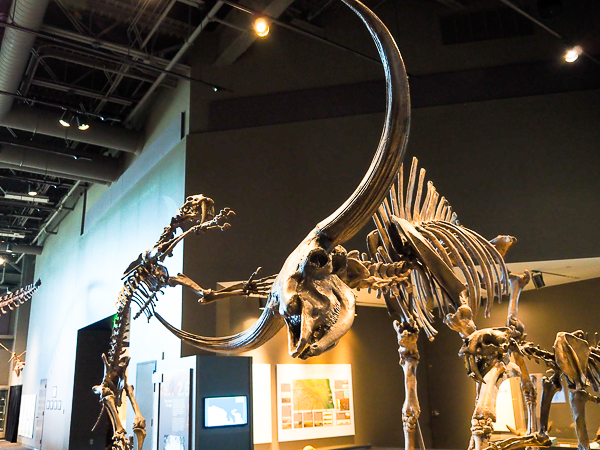
The museum covered a wide range of ND history -- from prehistory to modern days. I confess we focused on the old stuff.
This mount shows a giant bison being attacked by two saber-tooth cats. Looks like one of the cats is about to be skewered.
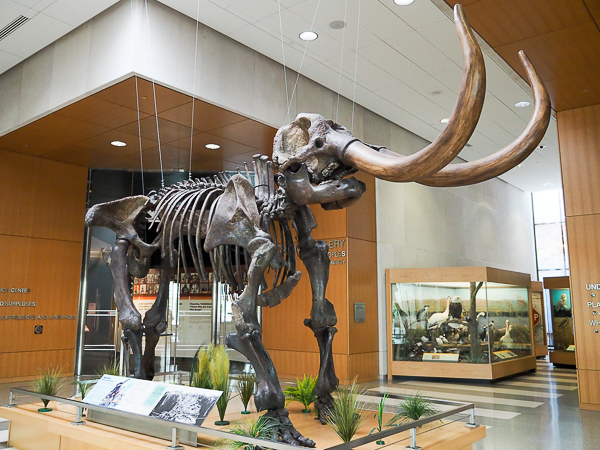
In the center of the museum is this mastodon mount.
Mastodons are roughly the same size as modern elephants -- and smaller than the mammoths we saw in SD.
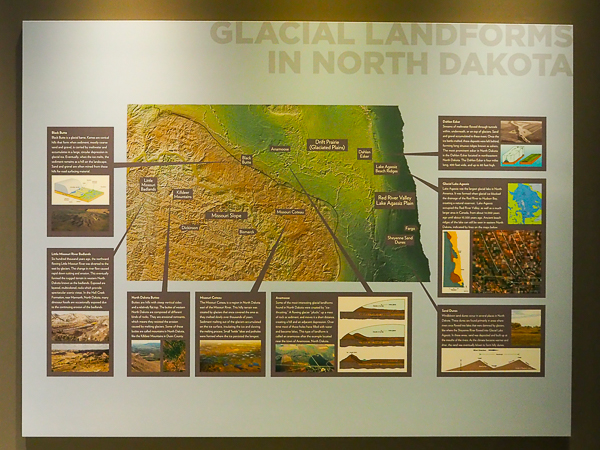
The effects of glaciers, which were mentioned in conjunction with the Welk homestead, is illustrated in this geological display. The grinding action of the ice followed by huge lakes dammed by the ice has caused the flat land to the right.
The Missouri River, which once flowed north like the Red River which serves as the eastern boundary of the state, was diverted south by the mass of ice.
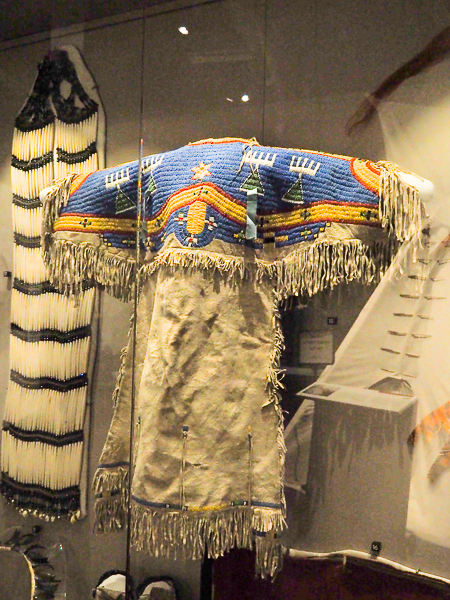
There were numerous exhibits of tribal bead and quillwork. I didn't get a picture of the description of this dress.
The stole to the left of the dress was of a type worn by women. Warriors wore a similar breastplate, but the bones were horizontal rather than vertical. They were also much shorter.
In addition to the vintage clothing, there were many exquisite modern interpretations of traditional beadwork.
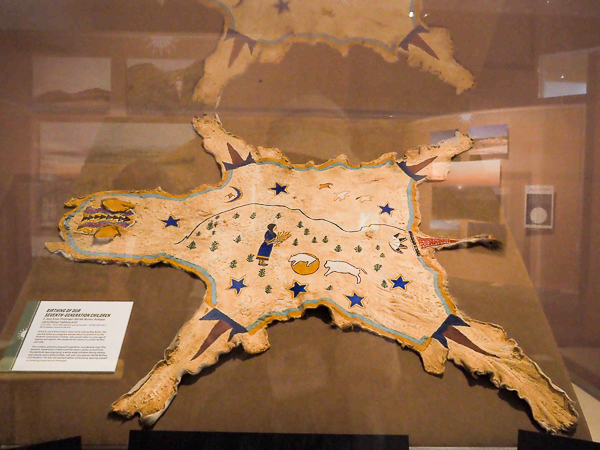
This is another modern piece with a traditional interpretation.
The buffalo calf-skin is painted with images from a vision experienced by the artist, D. Joyce Kitson or Red-Hair Woman. The piece is called Birthing of our Seventh-Generation Children.
Native Americans trace the seventh generation principle to a code developed by the Iroquois well before the arrival of Europeans. It enjoins leaders to consider how their decisions and actions will affect the people up to seven generations in the future.
Our consumer society would do well to adopt that principle.
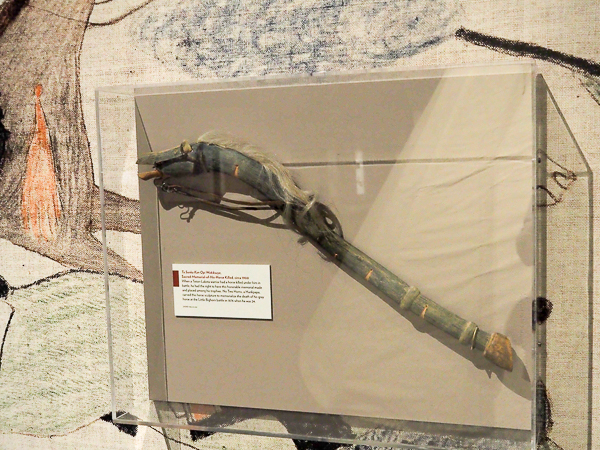
This one struck my fancy. When a warrior had a horse killed underneath him in a battle, he had the right to make a memorial to the animal.
No Two Horns, a Hunkpapa Lakota, carved this memorial to his grey horse killed in the battle of Little Bighorn.
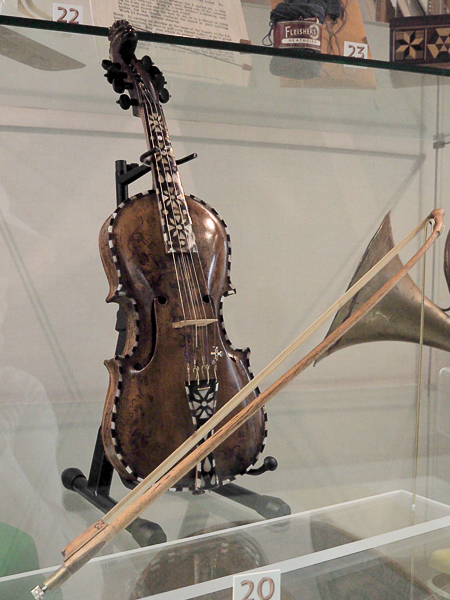
If it's not horses, it's fiddles.
This Hardanger fiddle was in the section describing European immigration. It has the traditionally played four strings of a violin with four or five sympathetic strings running underneath the fingerboard. The sympathetic strings are tuned to resonate as the fiddle is played.
The ornate decoration is typical.
One of the fiddlers who comes to the Strathgheny School of Scottish Fiddling has a Hardanger fiddle. It has a unique sound.
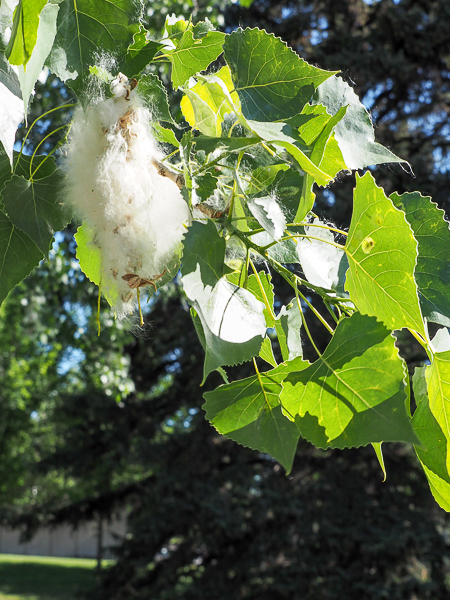
There were a number of cottonwood trees outside the Heritage Center. It is the season for these trees to distribute their seeds via cotton "sails." There were some places that looked like they were covered with snow.
Click your "back" button to return to the previous page or click for our picture album.